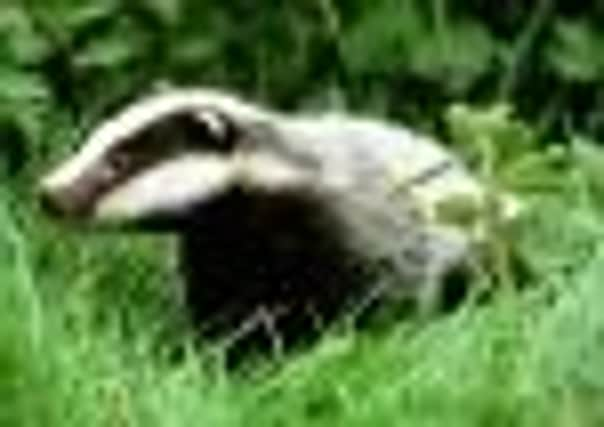Ministers set stage for new war of words on badger cull


The debate over whether to cull badgers to tackle bovine TB is one that has bitterly polarised farmers and animal welfare campaigners – and long proved a major problem for ministers.
So yesterday’s Government announcement supporting a science-led cull of badgers in the worst affected areas was always going to divide opinion.
Advertisement
Hide AdAdvertisement
Hide AdIt is part of a wider programme to eradicate bovine TB that includes routine testing and surveillance and the slaughter of infected animals. There is also £20m being spent over the next five years to develop effective cattle and badger vaccines as soon as possible. But with this still some way off it is the idea of a cull that grabs the headlines.
In announcing the move Environment Secretary Caroline Spellman said it wasn’t a decision that had been taken lightly.
“I wish there was some other practical way of dealing with this, but we can’t escape the fact that the evidence supports the case for a controlled reduction of the badger population in areas worst affected by bovine TB.”
Under the plans, which are being piloted in two areas, groups of farmers would hire a licensed marksman to shoot badgers on their land for a period of six weeks, for four years.
Advertisement
Hide AdAdvertisement
Hide AdThe RSPCA called it a “black day for badgers”, accusing the Government of “slowly shredding its own animal welfare credentials”. Colin Booty, senior scientist for the organisation, said the RSPCA was sympathetic to farmers struggling to cope with the effects of this crippling disease but that a badger cull was not the answer. “We believe that the Government have taken the wrong fork in the road with this risky policy. This cull will contribute little or nothing to the long-term goal of eradicating TB nationally.”
However, the National Farmers’ Union (NFU) argue it is not about eradicating badgers, but eradicating the disease. “Sometimes we have to do what is unpopular because we know it is right. Not taking action is no longer an option and the Government has recognised that,” said NFU President Peter Kendall. “As the most recent science shows badger controls are absolutely necessary, together with cattle controls, to get on top of this devastating disease.”
So far, there are only a small number of cases of bovine TB in cattle in Yorkshire and there is no evidence of the disease in the local badger population, but the fears are that it will spread north.
Rates of tuberculosis in cattle have doubled in less than a decade and last year about 32,000 infected animals were put down, with tens of millions of pounds spent compensating affected livestock owners.
Advertisement
Hide AdAdvertisement
Hide AdThe problem is that both sides believe they are right. Farmers have repeatedly called for a cull of badgers to tackle what they say is one of the greatest threats facing beef and dairy farmers. They believe that a cull would save them money in the long run.
On the other side of the fence, wildlife and animal welfare organisations, including the Badger Trust and the Wildlife Trusts – whose symbol is the badger – remain opposed to a cull, claiming vaccinating badgers, increased levels of testing, improved biosecurity and stricter controls on the movement of cattle were more effective ways of eradicating bovine TB in cattle for good.
During the last Labour government the then Environment Secretary Hilary Benn ruled out a cull of badgers in England after a major study into culling concluded it was not cost-effective and led badgers to move around – increasing the disease in the surrounding areas. Last year, researchers looking at data from the randomised badger culling trial (RBCT) found that widespread, repeated culling of badgers could reduce the incidence of disease in cattle herds. The latest work based around this trial found that it continued to have a positive effect in reducing infection in the cull area after the scheme ended, cutting the number of new herds infected by up to 16 per cent.
The findings led leading scientists to conclude that “co-ordinated, sustained and simultaneous” culling would reduce the rate of TB in cattle in the area.
Advertisement
Hide AdAdvertisement
Hide AdBut Lord Krebs, who led a major review on badgers and TB in the 1990s which recommended the culling trial, said only last week that a cull would not be effective, as it would leave about 85 per cent of the problem untreated, and would be a “mistake”.
With a nine-week consultation period about to start we haven’t heard the last of this.